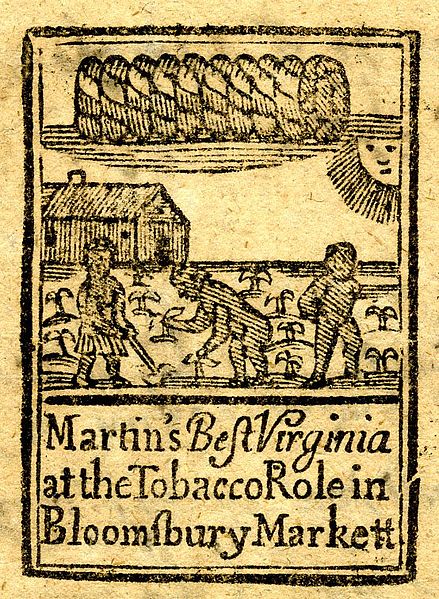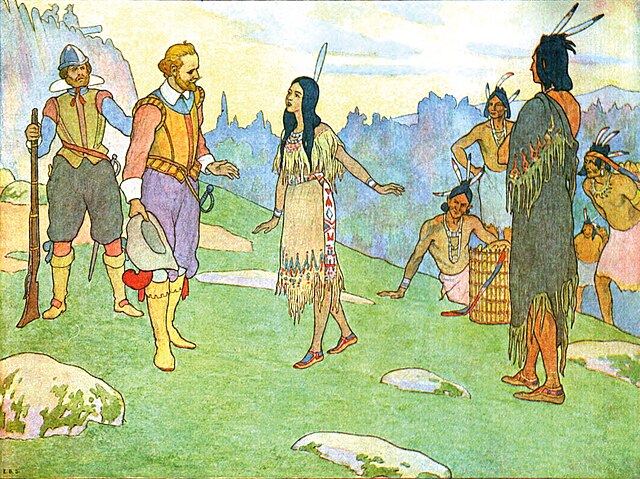Tobacco in the American colonies
Tobacco cultivation and exports formed an essential component of the American colonial economy. It was distinct from rice, wheat, cotton and other cash crops in terms of agricultural demands, trade, slave labor, and plantation culture. Many influential American revolutionaries, including Thomas Jefferson and George Washington, owned tobacco plantations, and were hurt by debt to British tobacco merchants shortly before the American Revolution. For the later period see History of commercial tobacco in the United States.
Tobacco advertisement from 18th century London
Nicotiana tabacum
Cultivation of tobacco at Jamestown 1615
Slaves processing tobacco in Virginia in 1670
Virginia, officially the Commonwealth of Virginia, is a state in the Southeastern and Mid-Atlantic regions of the United States between the Atlantic Coast and the Appalachian Mountains. The state's capital is Richmond and its most populous city is Virginia Beach, though its most populous subdivision is Fairfax County, part of Northern Virginia, where slightly over a third of Virginia's population of 8.72 million live as of 2023.
The story of Pocahontas was simplified and romanticized by later artists and authors, including Smith himself, and promoted by her descendants, some of whom married into elite colonial families.
In 1699, after the statehouse in Jamestown was destroyed by fire, the Colony of Virginia's capitol was moved to Williamsburg, where the College of William & Mary was founded six years earlier.
In 1765, Patrick Henry led a protest of the unpopular Stamp Act in the House of Burgesses, later depicted in this portrait by Peter F. Rothermel.
Eyre Crowe's 1853 portrait, Slaves Waiting for Sale: Richmond, Virginia, which he completed after visiting Richmond's slave markets, where thousands were sold annually








